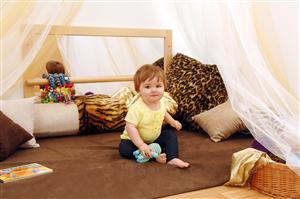Guest Blog Author: Kathy Brodie founder of KathyBrodie.com.
Sustained Shared Thinking & The Early Years Foundation Stage
 When Sustained Shared Thinking (SST) was introduced to the Early Years Foundation Stage (EYFS), some practitioners were worried that this was yet something else new to master. However, Sustained Shared Thinking is one of the most natural parts of working with young children. It can be simply described as working and thinking together with children. This will be to have meaningful, extended discussions, to solve problems, to extend knowledge or be creative.
When Sustained Shared Thinking (SST) was introduced to the Early Years Foundation Stage (EYFS), some practitioners were worried that this was yet something else new to master. However, Sustained Shared Thinking is one of the most natural parts of working with young children. It can be simply described as working and thinking together with children. This will be to have meaningful, extended discussions, to solve problems, to extend knowledge or be creative.
In practice, this could be extended conversations, where the practitioner encourages their key child to really investigate what is happening when an ice cube melts or they are mixing coloured paints. Alternatively, it may be solving a problem such as how to lie out an obstacle course or how to make a tower of blocks more stable.
Very often it is characterised by an in-depth dialogue between practitioner and child. This could also be between two children, especially is one child is more expert than the other. Sometimes it may be a project that your child would like to return to after a period of time, such as a construction project or den building.
One very important component of Sustained Shared Thinking is the physical environment. Ideally, the environment should be calm and quiet, so you can have conversations without interruption. However, settings are rarely like this! A good compromise is plenty of little hideaway corners where children can gather to talk and learn, from practitioners and each other. This may be a tent, den, or mirrored triangle. It could simply be a curtained off area with soft cushions.
 Children tend to be more active outdoors, so there may be less opportunities to have extended, in-depth conversations. But, with a little imagination, you can create areas that encourage the learning skills that typify SST. For example, having a planter, where practitioners and children can sit side by side to consider a problem, or just to watch the plants and mini-beasts.
Children tend to be more active outdoors, so there may be less opportunities to have extended, in-depth conversations. But, with a little imagination, you can create areas that encourage the learning skills that typify SST. For example, having a planter, where practitioners and children can sit side by side to consider a problem, or just to watch the plants and mini-beasts.
Babies can even enjoy Sustained Shared Thinking. An ideal time for this is when playing in their sensory area. This may be playing peek-a-boo behind a sheet of fabric or when investigating different textures. The joint involvement and sharing of the experience will help to extend their learning.
Sustained Shared Thinking is really not a new idea. In order to do it more effectively, one of the things you need to do is to review the use of your environment. You should try to create as many opportunities as possible to encourage children to think about and learn from their experiences.
